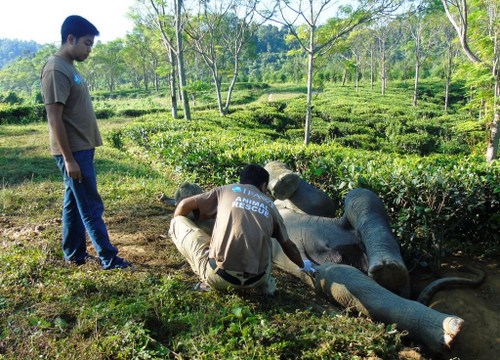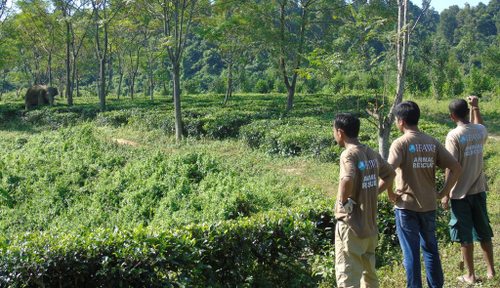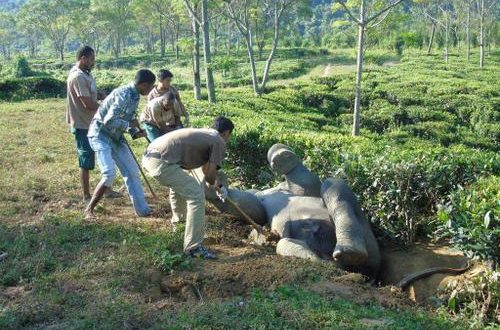Elephant rescue involves spade work!
Deputy Director
IFAW-WTI run CWRC
Borjuri, Kaziranga, November 2, 2014: It was about 7:30 AM and I was just relaxing with my cup of tea on a Sunday morning when a call from Kaziranga control room launched me to action.
An elephant calf was trapped in a tea garden ditch at Borhola, near Diphloo tea estate, the caller informed. I immediately called our rescue team members and braced ourselves for a rescue operation. CWRC veterinarian Panjit Basumatary picked up fellow veterinarian Biswajit Boruah; I joined them within five minutes at Biswajit’s place and the three of us came to CWRC to get the other team members and organise the logistics.
It took us about half-an-hour to reach Borhola. Our vehicle could not reach the rescue spot due to bad road conditions and we virtually sprinted the last 200 meters to get to the spot.
The IFAW and WTI partnership encompasses many facets of animal welfare in India: animal rescue efforts in the wake of floods and cyclones, green livelihood creation for local communities, and wildlife ranger training.
A male elephant of about 10 years old (technically a juvenile) was lying on his back with all limbs up, in a five feet deep tea garden ditch that was just two feet wide.

The IFAW-WTI rescue team doing a medical check-up on the juvenile elephant.
Photo: Subhamoy Bhattacharjee/IFAW-WTI
He was struggling to move and trumpeting, clearly in pain.
The elephant was believed to be trapped in the previous night when its herd tried to sneak into the nearby paddy field nearby and somehow this one could have fallen down into the tea garden ditch.
The elephant had one tusk, just like “Ganesha” the elephant-headed God, who is worshipped in India as the remover of all obstacles.
We were determined to clear all obstacles to his exit into the forest, where he belonged.
For a while we discussed our strategy to extricate the animal out from this predicament. We enquired for a JCB excavator to widen the ditch. We found one, but unfortunately it would take at least one hour to reach the spot, with the distance and bad roads.
We then decided to work with our hands – a spade and other local equipments to widen the ditch, instead of waiting for the excavator.
With great difficulty, both the veterinarians injected pain relievers to the struggling elephant.
In the mean time a team from the Forest Department also reached the spot to help us.
A few local people too helped the rescue team.
The crowd started increasing because of the drama that was unfolding…
After about one hour of spade work, we could widen the ditch and slowly the animal managed to turn to dorsal from his upside down position. We did not lose hope. Somebody told us that the excavator machine was also reaching the spot soon. We felt more enthused with this bit of good news.
“Uthile, uthile…. (it got up, got up),” the crowd shouted. Yes, slowly the elephant tried to get up and after a few seconds of trying he could lift his body from the ground. Some people clapped with joy on seeing the the animal saved. We all moved to a safe distance from the animal to facilitate his exit from the ditch.

The team watching the rescued elephant walk towards the forest
Photo: Subhamoy Bhattacharjee/IFAW-WTI
The elephant also managed a small mock chase at the crowd but soon it ventured towards the nearest forest. We followed the animal till it disappeared in the thick bushes of the forest.
It only took us an hour of hard work but digging an elephant out of a trench on a Sunday morning heralds a beautiful Sunday. More so was the satisfaction of seeing it go back to the forest!









